News
Workshop "SKAnning Space from Africa: Seeing and Becoming"
23.04.2020
As the culmination of the multilateral postdoc working group “SKAnning Space from Africa: Seeing and Becoming” focusing on the largest radio telescope on earth, the Square Kilometer Array (SKA), an interdisciplinary workshop took place in Bayreuth from 10 to 14 February 2020.
By Hanna Nieber, member of the Faculty of Humanities & Social Sciences Study of Religion at the University of Bayreuth
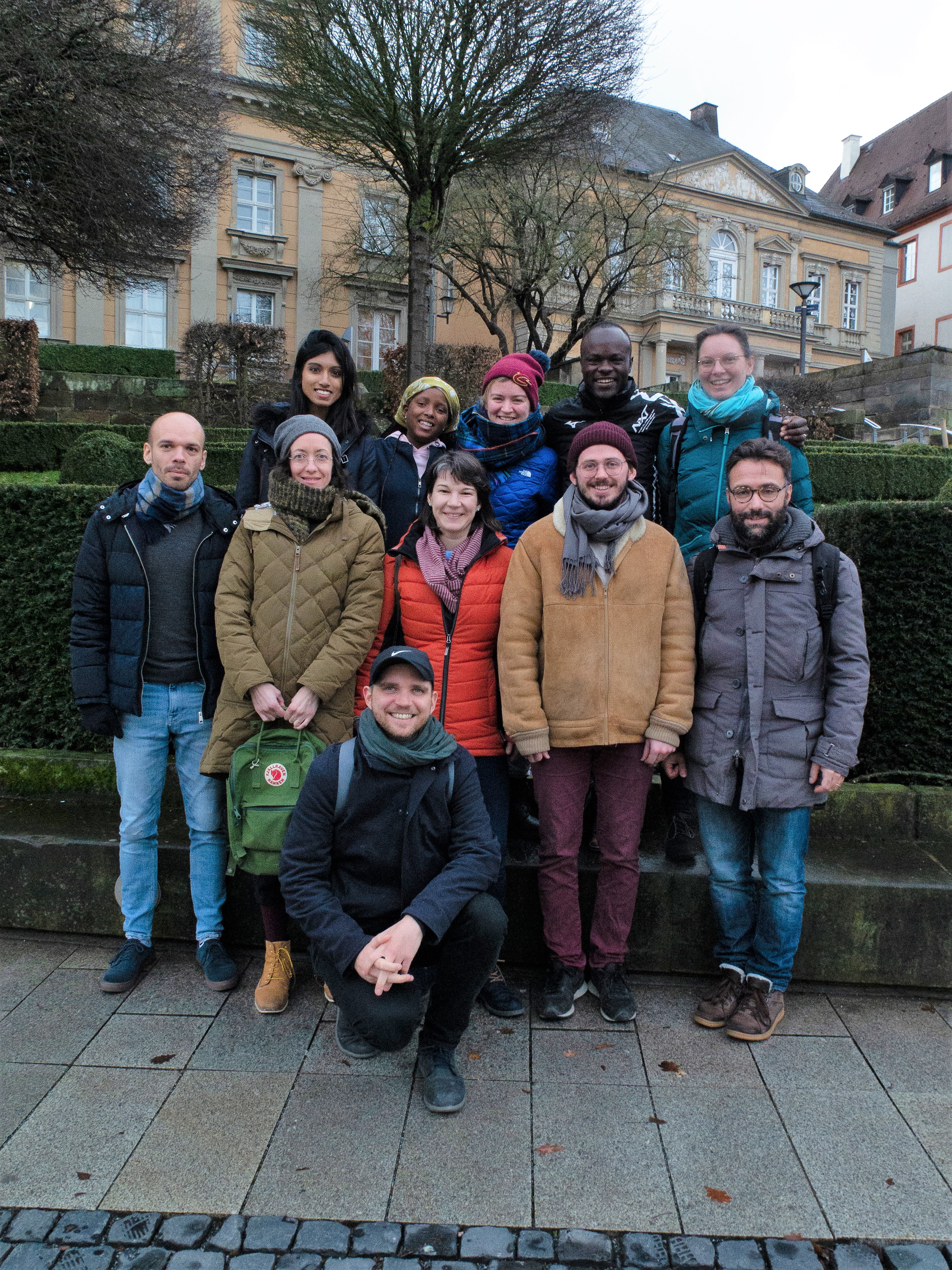
Group picture © James Merron
The Square Kilometer Array (SKA) radio telescope is in the process of becoming the world’s largest scientific instrument. Based in South Africa and extending across the continent, the SKA enables not only cutting-edge science, but also new “becomings” of things and people. Existing radio dishes are converted into astronomical instruments and a new generation of experts and scientists – such as astrophysicists, bioinformaticians as well as geographic information systems specialists – are currently being trained and are celebrated as Africa’s bright future. In the workshop, we analysed and discussed processes and conditions for these becomings, entangled with temporalities and spatialities of socio-technicality. Seeking different disciplinary perspectives on becomings, participants came from the fields of astronomy, social science studies, anthropology, linguistics, and philosophy.
Coming
Despite delayed arrivals due to the storm “Sabine” for which flights and trains had been cancelled, eventually, all participants arrived safely. The workshop started with an excursion into the nearby mountains Fichtelgebirge. While we learned a lot about the history of Franconia and the Fichtelgebirge, the most interesting part – with respect to our workshop theme – was the lingering absence of knowledge about the former (military) use of the radio tower on the Schneeberg mountain. We were unable to visit the tower because not only the legislation for the surrounding natural reserve prohibits cars to drive up and in addition, the storm prevented us from going through a mountain forest, but also because entry into the compound of the tower is highly restricted due to sensitive instruments and information stored at site. Instead, our tour guide Adrian Rossner told us about several kind of absences and future research eagerly awaited by the municipality and the population once the information moratorium is cleared.
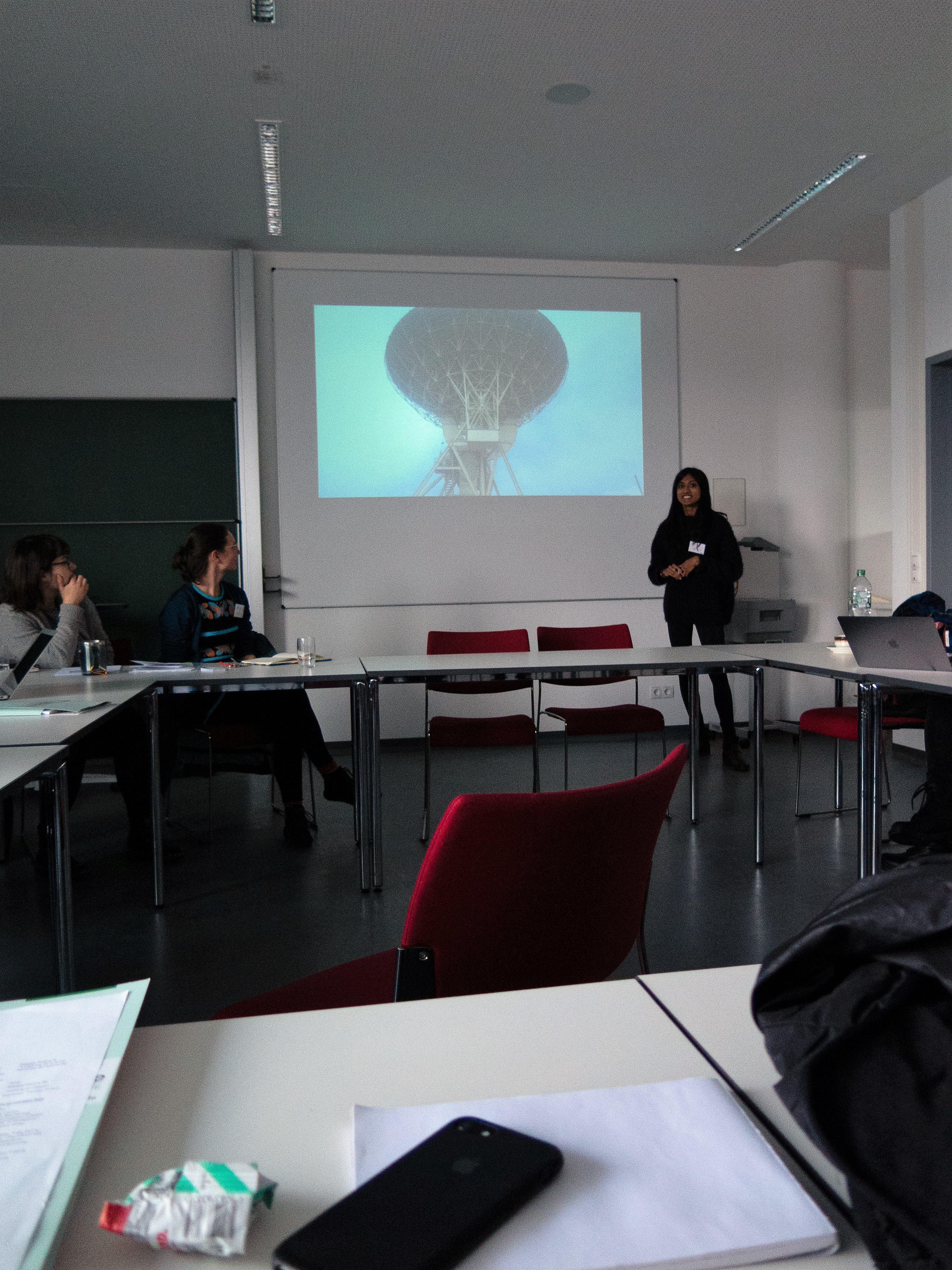
Samyukta Manikumar during her presentation, © James Merron
During the Cold War, the tower had been occupied by the USA assumedly for espionage using technology that is very similar to radio telescopes. The files, however, are still classified and archives are only now slowly being released in the US. When the US left the Schneeberg premises in the 1990ies, they took all the equipment with them, leaving the people with their questions and the tower as an empty shell. Both, the entanglements of military restricted zones and the formation of natural conservation areas as well as the entanglements of military history and (radio) astronomy left us with much to think about.
Becoming of
The following three days each opened with public lectures followed by closed working sessions. The first lecture was held by Prof James Chibueze; an astronomer from Nigeria, trained in various countries including Japan now working in South Africa. He provided an inside view about the becoming of the SKA; its history, technical and political implications.
The day continued with a PechaKucha session in which each presenter had 6:40 minutes to present 20 slides of 20 seconds each. Samyukta Manikumar, an astronomer, mathematician, writer, and facilitator of astro-tourism in Kenya started with a presentation about her involvement in Development for Africa through Radio Astronomy (DARA). James Merron then presented on the SKA site in Ghana and his work on making visible the invisible. Next in line was Irina Turner who spoke about postcolonial approaches to radio astronomy in South Africa and its media coverage. Susann Ludwig followed with a beautiful performance about the possibility of translating and understanding. Finally, Hanna Nieber shared some impressions of her explorative fieldwork in Madagascar.
After this vivid but short introductory format, we moved to a more thorough engagement with certain themes. In order to find a common language amongst the interdisciplinary group of participants, Siri Lamoureaux conducted an interactive session on methods and methodology in Science and Technology Studies (STS). How does STS arrive at a topic, what questions are guiding STS, and how does STS research look like? This session proved to be crucial for our further communication.
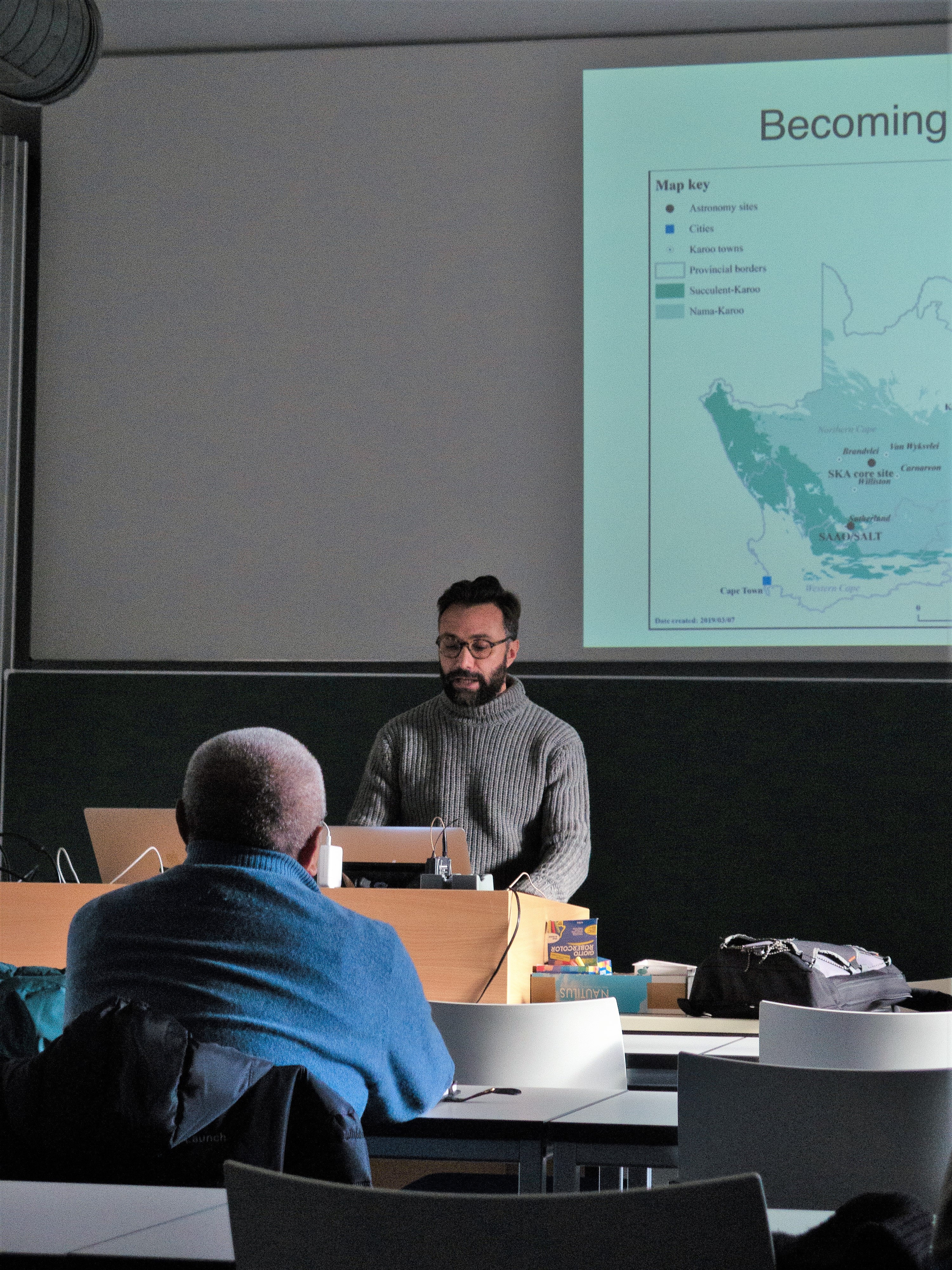
Davide Chinigò during his lecture, © James Merron
The afternoon continued with some insights into teaching science and how that cannot be divorced from culture. Finbarr Odo, an astronomy lecturer in Nsukka, Nigeria could not secure a visa, but sent a video of his presentation. He argued that cultural astronomy should be taken more seriously in teaching astronomy and provided examples for fruitful points of convergence. Noluvuyo Matiwane, a physics lecturer at Rhodes University in South Africa, complementarily showed how procedures taught in physics and science education more generally can impact everyday decision making. Odo and Matiwane provided interesting insights into learning and teaching science grounding the becoming of scientists and of science.
Becoming With
On Wednesday, Davide Chinigò, a postdoctoral researcher from Stellenbosch and co-editor of “Karoo futures: Astronomy in Place and Space” shared his insights about SKA-becomings in the second public lecture. Skillfully phrased, he structured his talk in several Deleuzian “flights” and unfolded the complexity of engaging with becoming in the multiplicities the SKA gives rise to. After his lecture, we split up into three groups for the main part of the day. Each group was given the task to create a small video on one of the given concepts: “translation,” “blackbox,” and “assemblage.” Much time was spent in each group discussing its concept and finding a creative way to visualize it. At the end of the day, the videos were presented and discussed among all workshop participants.
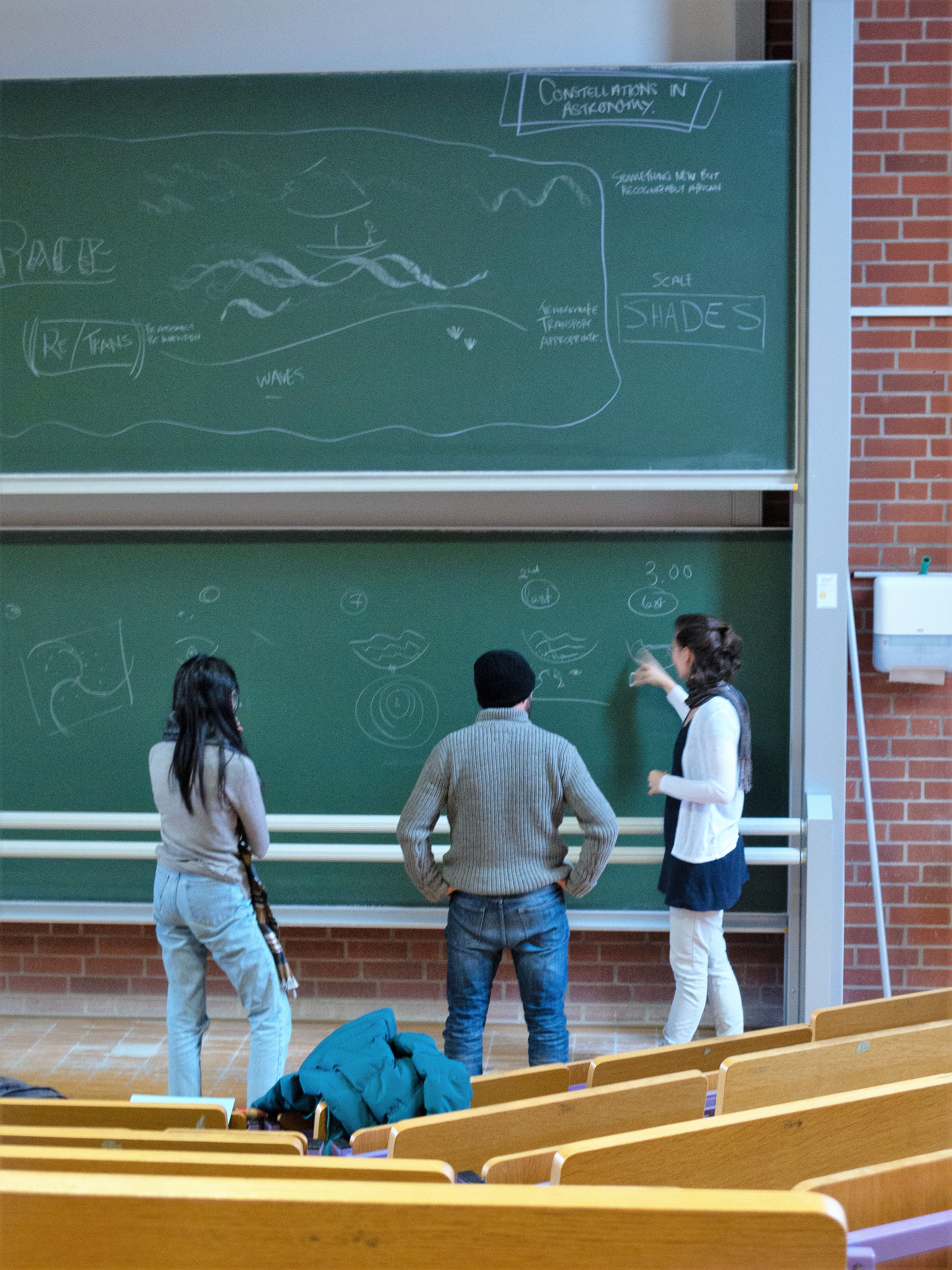
Participants discussing how to make their video © James Merron
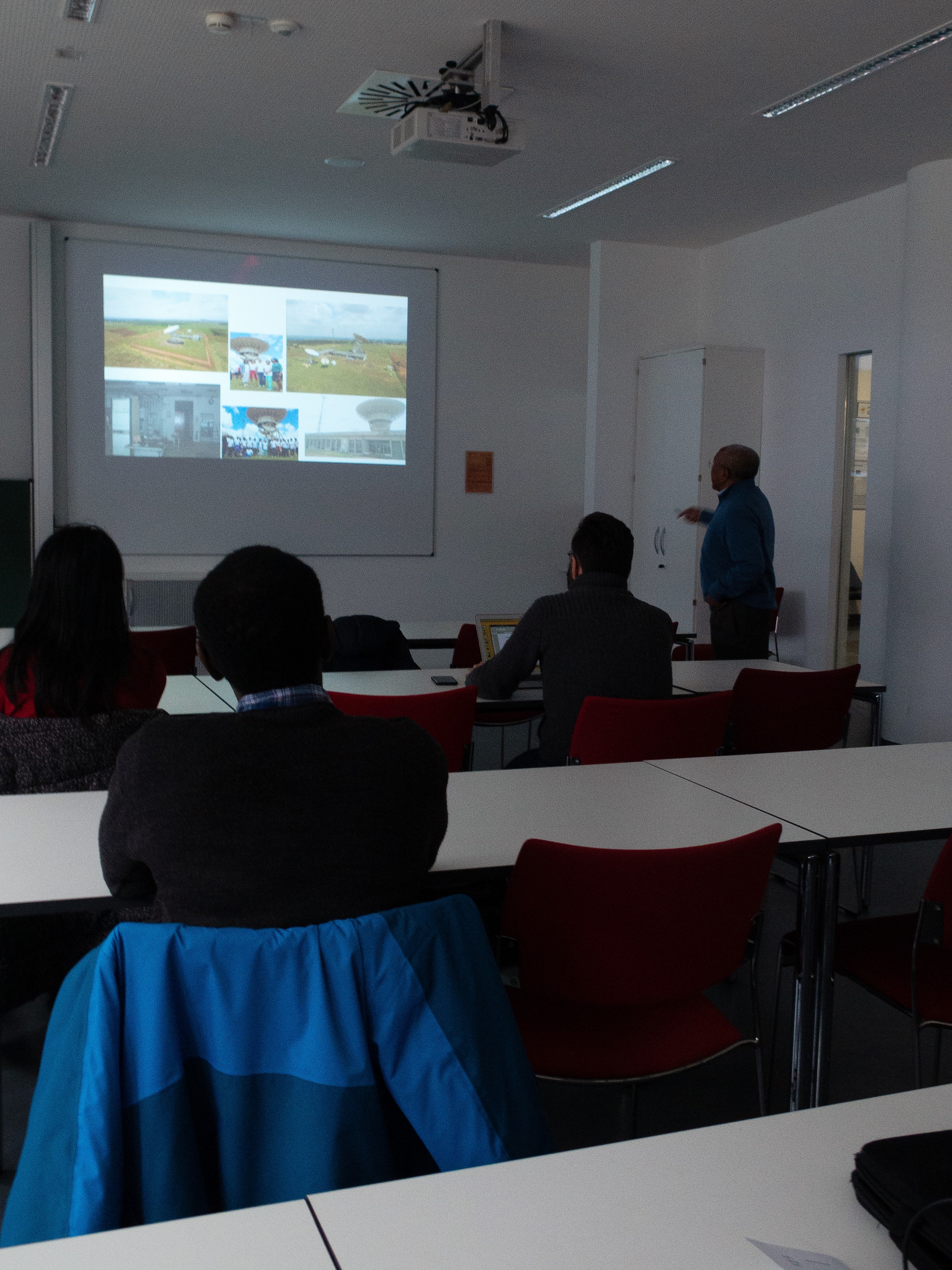
Prof. Ratsifaritana showing pictures of the future telescope in Madagascar
Becoming Through
On Thursday, Charles Ratsifaritana, an astronomy professor in Madagascar, closed the public lecture series. Prof Ratsifaritana is not only a skillful facilitator who enables an old telecommunication dish to be leased to the government in order for this dish to become a future telescope, but also an admirer of Richard Wagner’s music. In talking about the becoming of astronomy in Madagascar, his lecture gave insights into the myriad networks he was able to mobilize; apparently, also for a timely conversion of an existing old telecommunications dish into a telescope as part of the SKA.
In the following closed sessions, we engaged with disciplinary angles that provided directions to enrich our discussions. Basil Bucher, a Master student of African Studies in Basel presented three ways to think about astronomy and the SKA in terms of archives. Tadej Pirc, a philosopher from Slovenia, presented how to think astronomy as “beauty” relying on philosophical reflections on art as the highest act of reason.
Although we had scheduled some time for individual interviews, anticipating that some participants would want to take advantage of the presence of others, the group decided to change the format since everybody was interested in everybody else’s questions and responses. We thus had 5-minutes spotlights on each participant, allowing everyone else to ask questions until it was the next person’s turn. This change of format was symbolic for the group spirit that we had developed throughout these days – indicating a genuine interest in each other’s becomings.
Future Becoming
Emerging from an inspiring group spirit and the tangible benefits of our transdisciplinary exchange, the network that manifested in Bayreuth keeps communicating and conceptualizing for future collaborative projects up to today.
Please also see Samyukta Manikumar’s reflections.

